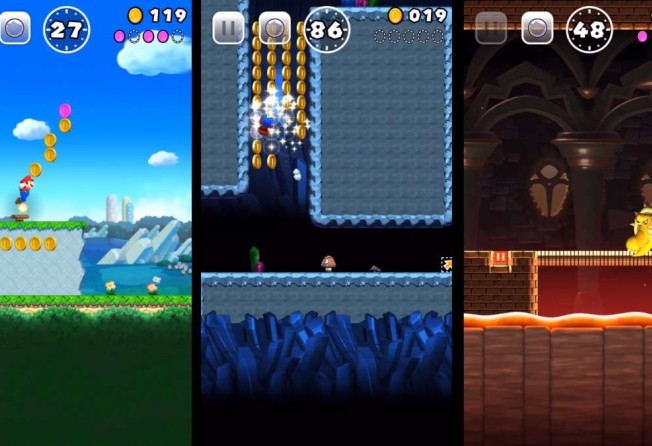Super Mario has made his iPhone debut, so what does this tell us about Nintendo’s future?
After years resisting calls to put its characters in apps, Nintendo has changed tack and Super Mario has made his smartphone debut with a running game. But does the company really understand how gaming has changed?

Nintendo is really getting serious about its play for mobile screens, launching its first real smartphone game starring its most iconic character, Mario.
The app, called Super Mario Run, hit Apple’s App Store on Thursday. For Nintendo fans everywhere, it’s the end of a long wait that started when the app was announced at Apple’s annual iPhone launch event in September. It’s also a key moment for Nintendo, which has had a hard time dealing with the shift to casual gaming on smartphones and has resisted calls to put its classic characters into apps.
Smartphones have introduced more people than ever to games – as illustrated by the Pokemon Go craze – but can also shift buyers away from game consoles and hand-held devices such as Nintendo’s 3DS. By making a mobile game, Nintendo is saying that it’s finally ready to imagine an audience beyond its own hardware.
So far, so good. Super Mario Run is a lot of fun. The designers have managed to make a game that blends nostalgia and the new technology of the touch screen well. The story, such as it is, is exactly the same – Bowser has taken Princess Peach and you have to save her – and you also must rebuild your kingdom. The setting is familiar, and goombas and koopas are still trying to block your way to your goal. Longtime Nintendo fans will see a lot they already love. But this time, they can play with one hand.

This is not simply a classic Super Mario game transported to the iPhone. Some things have been streamlined for the touch screen. Super Mario Run is an endless running game, which means you’re almost always running forward. That could frustrate some players who might wonder why they can’t move Mario all the ways they could when he was an eight-bit sprite. You can’t go back and pick up coins you missed. You can’t take little jaunts down the pipes.
What you can do is jump. A lot. Tapping the screen will make Mario catch some air – the longer you hold down your finger, the higher he goes before gravity kicks in. He can also vault off cliff edges and walls, which lets you reach higher places in the levels. Once you accept your perpetual forward motion, figuring out how to get where you want to go becomes a fun puzzle.
Players will definitely get replay value out of the game, especially since it’s easy to run past things you might want to pick up. Going through a level again will let you go down roads not travelled before. Players also collect different-coloured coins throughout the game, and the colour and placement of those coins changes as you meet your objectives. So even if you play a level again, you should find something new.
The coins feed your rebuilding efforts. Coins of different colours let you buy buildings and other swag to decorate and rebuild your kingdom. There’s also a second mode to the app, called “Rally”, which pits you against another real-world player and helps you win residents for your kingdom. You’re scored on how many normal coins you collect, as well as how much flair you exhibit while you’re racing. Over time, you can restore and repopulate your little patch of the world.
The main drawback of Super Mario Run is that, in its free version, it’s very short.
The free download gets you only three levels – that doesn’t even get you to the first castle. The full version of the game costs US$10. That price would probably feel right on an e-store for the 3DS or the Wii, and there is enough to do in the app to justify that price tag. But people who play games on smartphones have different expectations, and US$10 is a lot to swallow when most other games are free or, at a stretch, US$2.
In some ways, the high app price could be seen as a signal that Nintendo, while definitely coming around on smartphones, still doesn’t get the platform – or, at least, hasn’t fully given in to it. It is obvious that mobile games are going to be a part of Nintendo’s future. For most players, though, the high mobile price tag means they’ll get a taste of how fun Mario could be on the smartphone, but stop short of paying to see his full potential.